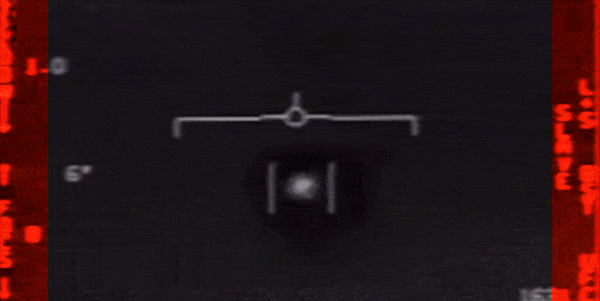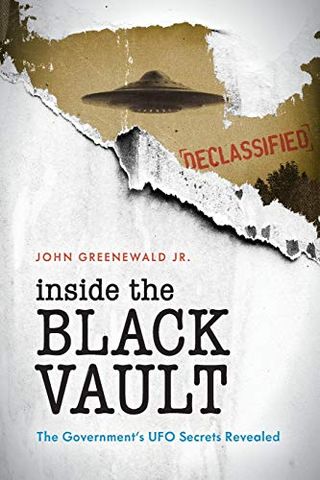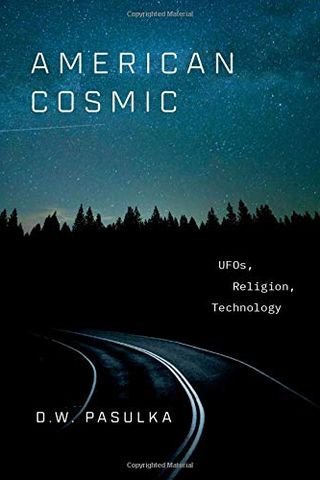- President Donald Trump is threatening to veto a defense bill that includes language directing a government task force to investigate and disclose information about unidentified aerial phenomena (UAPs), also known as unidentified flying objects or UFOs.
- The Pentagon’s once-covert UFO program is officially active again with the establishment of the task force, whose mission is to “detect, analyze, and catalog UAPs that could potentially pose a threat to U.S. national security.”
- Earlier this year, the Navy officially released three notorious UFO videos.
President Donald Trump says he’ll veto the 2021 National Defense Authorization Act (NDAA), the annual bill that sets the budget and policies for the U.S. military, if lawmakers don’t remove a bipartisan amendment to rename military bases named after Confederate leaders, according to an NBC News report.
The NDAA, which must be passed and signed before Congress adjourns on January 3, covers troop pay raises and funding for new equipment, among other items. But it also includes language that could ultimately change what the American public knows about UFOs in a significant way. A Trump veto of the NDAA may stall the momentum of a movement that has rapidly captured mainstream attention over the last two years.
🕳 DIVE DEEPER. ➡ Read best-in-class science, tech, and military features and get unlimited access to all things Pop Mech.
In August, the Department of Defense (DoD) officially approved the establishment of an Unidentified Aerial Phenomena (UAP) Task Force (UAPTF). The task force will investigate the sightings of UAPs, also known as unidentified flying objects or UFOs.
The task force is the first official government program affiliated with UFO research since a 2000s-era unit that analyzed unmanned aerial vehicles (UAVs) and other UAPs lost its funding in 2012, even though multiple sources confirmed with Popular Mechanics that the unit remained active in secrecy after its shuttering.
The DoD formed the UAPTF to “improve its understanding of, and gain insight into, the nature and origins of UAPs,” Pentagon spokesperson Sue Gough told Popular Mechanics at the time. “The mission of the task force is to detect, analyze, and catalog UAPs that could potentially pose a threat to U.S. national security.”
In June’s Intelligence Authorization Act (IAA), the Senate Select Committee on Intelligence (SSCI) authorized appropriations for fiscal year 2021 for the UAPTF and supported its efforts to reveal any links that UAP “have to adversarial foreign governments, and the threat they pose to U.S. military assets and installations.”
This content is imported from {embed-name}. You may be able to find the same content in another format, or you may be able to find more information, at their web site.
In the IAA, the Select Committee on Intelligence said it “remains concerned that there is no unified, comprehensive process within the federal government for collecting and analyzing intelligence on [UAP], despite the potential threat,” and so it directed the task force to report its findings on UAP, “including observed airborne objects that have not been identified,” within 180 days.
The Senate passed the NDAA, which included the IAA containing the language about the task force, in July. Though the House’s version of the NDAA, which also passed in July, did not include the IAA, the Senate re-passed a version of the NDAA just last week under the House bill number (H.R. 6395) that does include the IAA and its attendant instructions for the UAP task force.
So if Trump indeed vetoes the NDAA and the House and Senate can’t produce a new version before the deadline, it’s back to square one—and the public will have to wait even longer for the much-anticipated disclosure of UAP secrets.
And what, exactly, have we been waiting for?
In July, SSCI chair Marco Rubio said he wants the UAPTF to find who’s responsible for UAP spotted over American military bases. Rubio said he hopes “the Chinese or Russians or some other adversary” haven’t made “some sort of technological leap” that “allows them to conduct this sort of activity.”
Rubio may very well be right in assigning UAPs to foreign adversaries, but the more intriguing possibility, of course, is that we can’t pinpoint their origins from anywhere on this planet.
In a July New York Times article, Harry Reid, the former Nevada senator who was instrumental in funding the government’s original UFO program, said he believes “crashes of objects of unknown origin may have occurred and that retrieved materials should be studied.” From the article:
“After looking into this, I came to the conclusion that there were reports— some were substantive, some not so substantive—that there were actual materials that the government and the private sector had in their possession.”
In the same Times article, the astrophysicist Eric Davis, who consulted with the Pentagon’s original UFO program and now works for the defense contractor Aerospace Corporation, said that after he examined certain materials, he came to the conclusion that “we couldn’t make [them] ourselves.” In fact, Davis briefed a DoD agency as recently as March about retrieving materials from “off-world vehicles not made on this Earth.”
The Times report and announcement of the UATF are the latest in encouraging recent developments surrounding UFO research, including the U.S. Navy’s April release of three videos that show unidentified aerial vehicles are genuine. The official drop came several years after the notorious clips first leaked online and properly ushered in the UFO renaissance.
This content is imported from YouTube. You may be able to find the same content in another format, or you may be able to find more information, at their web site.
In 2019, the Navy confirmed the three videos, taken by Navy pilots, indeed show “unexplained aerial phenomena,” but the service also said the footage should have never been released to the public in the first place. The Pentagon released the videos in order to “clear up any misconceptions by the public on whether or not the footage that has been circulating was real, or whether or not there is more to the videos,” a spokesperson told Popular Mechanics at the time.
Watch This:
This content is created and maintained by a third party, and imported onto this page to help users provide their email addresses. You may be able to find more information about this and similar content at piano.io




